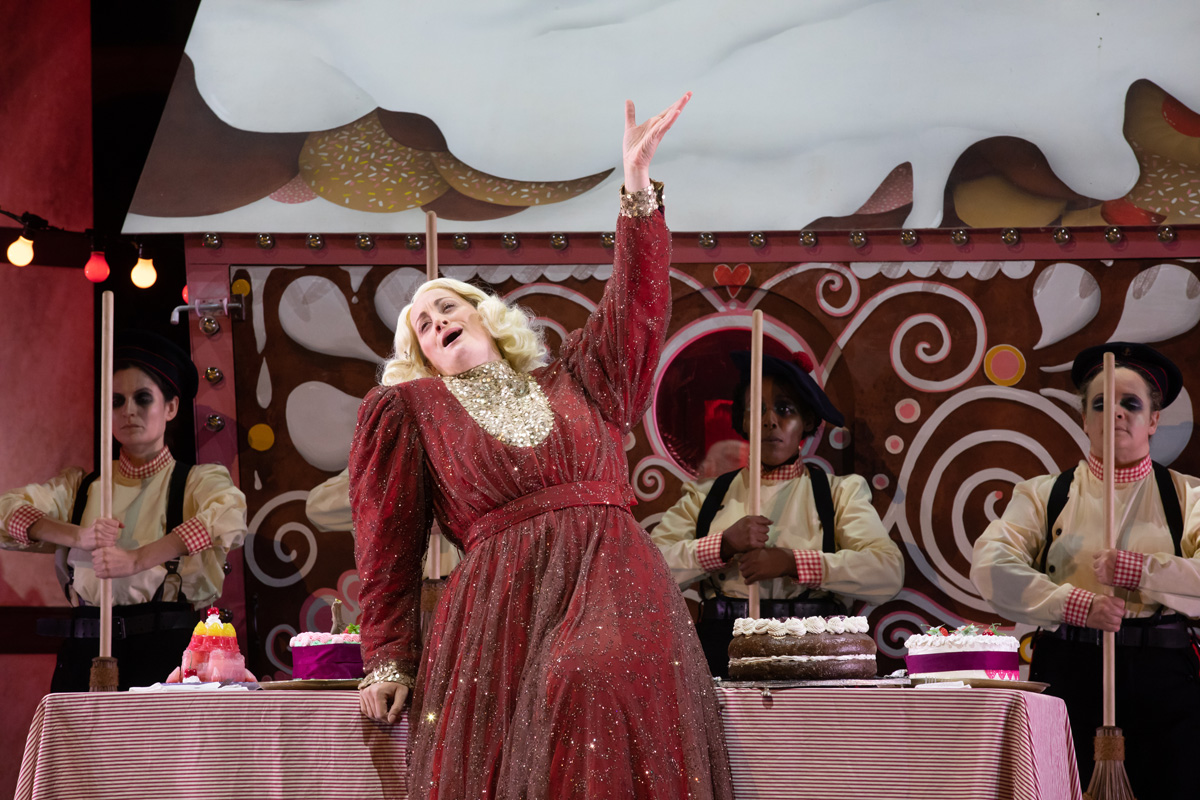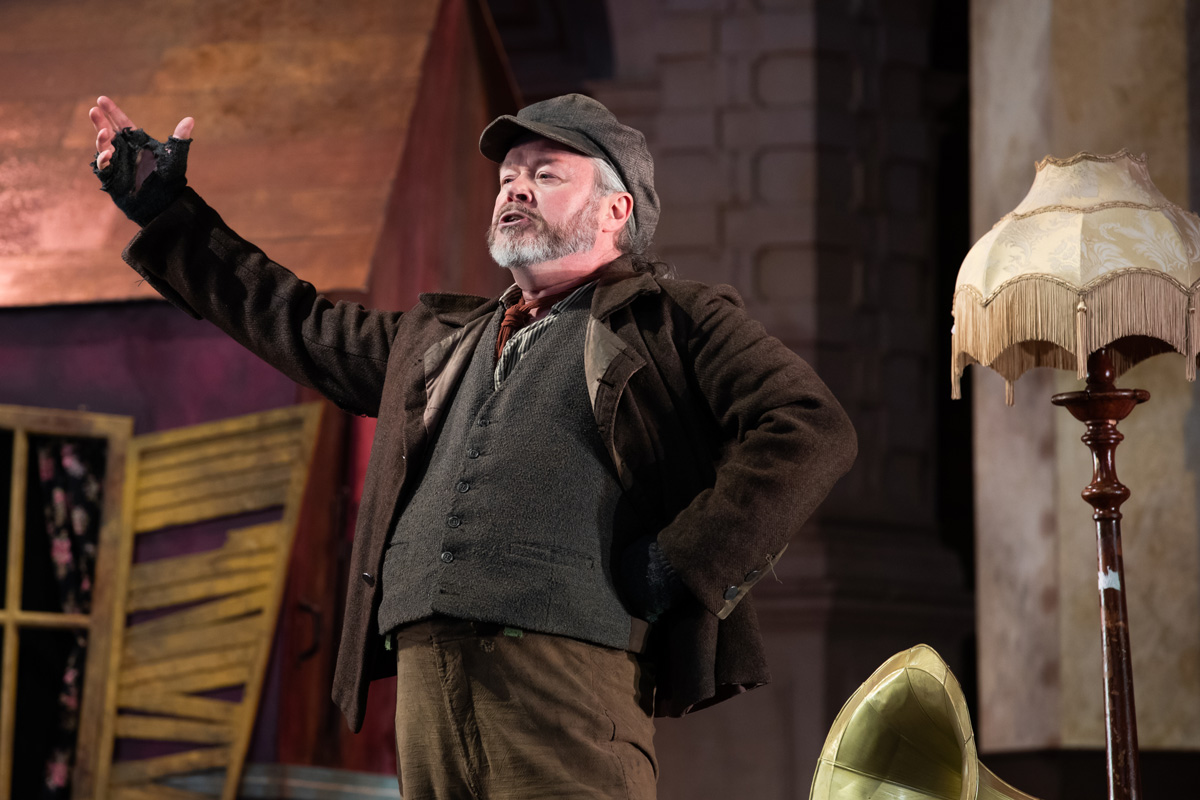Tim Hochstrasser reviews Humperdinck’s Hansel and Gretel presented by Opera Holland Park as part of this year’s season.

Hansel and Gretel
Opera Holland Park
4 Stars
Book Tickets
This opera is often thought of as a Christmas treat, but there is no reason why gingerbread houses, witches, fairies, and the fearful mysteries of the German forest should not be a summer adventure as well. Indeed, in the sharp contrast between hunger and penury with which we begin and lavish consumption at the end, there is ample scope for social commentary apt for any time of year and particularly this year.

Humperdinck saw his task very much as that of applying Wagnerian techniques of composition and orchestration to folk tales. It is the warmly sociable Wagner of ‘Meistersinger’ we find here, rather than the rugged archetypes of ‘The Ring.’ There is a strong narrative drive to the story of the two hungry children who are sent to collect berries in the forest, get lost and then immersed into a world of magic charms, and subtle spells spun by an evil witch. But it is the moods of the music and the transitions between them that particularly elevate this opera, and the success of this aspect rests mainly with the orchestra and conductor. Here we are well served. The City of London Sinfonia responded warmly to the carefully calibrated conducting of Kărin Hendrickson with some exquisitely blended textures – especially in the long sequence from the appearance of the Sandman, through the Evening Prayer and into the dream vision that wafts us into the interval full of ‘forest murmurs’ – all the more effective as the sunset fades over Holland Park…

Over this strong sonic foundation director John Wilkie presents a fairly traditional production – and none the worse for that. Abstract pillars simulate the forest, assisted with some excellent dappled lighting effects; and a little portable house moves on and off as the family home before re-emerging as the tantalising gingerbread house, the site of temptation for some, and immolation for another. Good use is made of the walkway that surrounds the orchestra to ensure that the singers are properly heard, and costumes get the balance right between shabby and exotic.
There are no weak links in the cast, with all the leads plausibly acted as well as strongly projected vocally. Charlotte Badham and Laura Lolita Perešivana combine voices pleasingly in the title roles (which is not always the case) while also coming over as realistic teenagers, whether goofy or grumpy or joyful. It was very refreshing to have the Witch’s role properly sung, rather than presented as a caricature. Eleanor Dennis made her more seductive than alarming, which is surely right if we are to believe that the children are actually taken in by her. Both April Koyejo-Audiger and Charlotte Bowden were strongly characterized in the cameo roles of the Sandman and Dew Fairy.

It was a sign of the greater than usual emphasis on social realism in this production that the parts of the parents that bookend the opera bulked larger than usual. You believed very strongly that Meeta Raval and Paul Carey Jones were at their wits end to provide for the family, and, wrapped up in daily concerns, their insouciance about the whereabouts of the children was more credible as a result. As a very experienced Wagnerian, Carey Jones was particularly at home in this work; and the whole production moved up a notch or two when his powerful voice was first heard off-stage, before cycling into the arena.

The Opera Holland Park Chorus and children from the Cardinal Vaughan Memorial School need a special mention. Their roles are crucial not just for general atmosphere and reinforcement of mood shifts, but also because of the amount of stage movement they need to embody during the orchestral interludes, which ensure continual visual as well as aural interest and stimulation. The singers and those who trained them contributed powerful to the overall success of the production.
In his introduction to the evening James Clutton told us that the opera had enthralled about five hundred children in an earlier matinee show, and a similar spell was woven around the adults in the evening performance, testimony to the power of the work and the production to operate on different levels at the same time.
Until 23 June 2023
